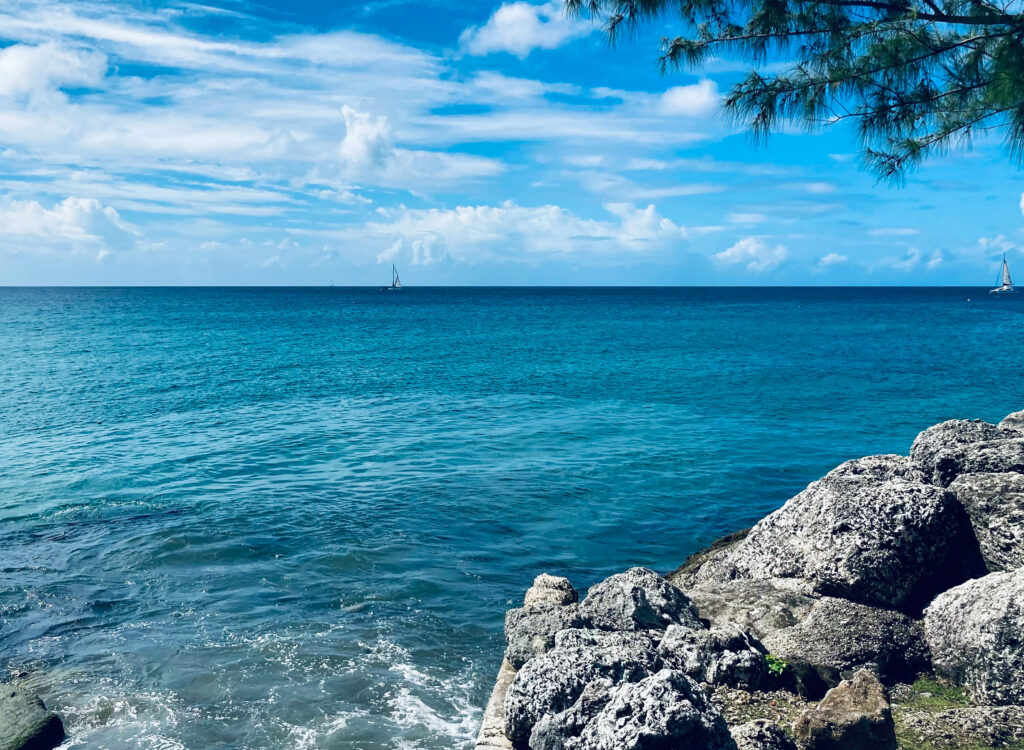You don’t often see green monkeys.
This post contains affiliate links. For more information, click here.
The unusual species first travelled to Barbados from west Africa aboard slave ships in the late 17th century. There’s now a small colony living near Fort Lauderdale, believed to be the descendants of runaways from a zoo in 1948. Their name comes from the green tinge to their golden fur, which glimmers in the sunlight.
My travel companions and I were looking forward to seeing these unusual creatures during our Holland America shore excursion to the Barbados Wildlife Reserve, which also hosts wallabies, otters, and exotic birds.
Unfortunately, our tour was cancelled. By the time we received the bad news, all the other intriguing options, like rum-tasting, were sold out.
So we decided simply to walk around Bridgetown, the Commonwealth nation’s capital, about 1,600 miles from Fort Lauderdale. We hoped to encounter interesting colonial-era history. George Washington visited Barbados in 1751, during his only trip outside North America. Tituba, the first person accused of witchcraft by Elizabeth Parris and Abigail Williams in Salem Village in 1692, is believed to have lived on Barbados before being brought to Massachusetts by Elizabeth’s father, Puritan minister Samuel Parris.
The Deep Water Harbour port was over-booked, so Nieuw Statendam docked on the industrial side, and we rode a shuttle bus to the cruise terminal. From there, we strolled along the shore toward the center of Bridgetown.
The clear turquoise water sparkled. Families crowded the beaches. Several boats floated beyond them. The Radisson Aquatica Resort Barbados stood in the distance along Carlisle Bay.
We explored Independence Square, which commemorates the island nation’s break with Britain. A statue honors the Right Excellent Errol Walton Barrow, Barbados’ first Prime Minister, known as the “Father of Independence”.
Barbados gained its independence on November 30, 1966. Exactly 55 years later, the island nation became a republic, casting off Queen Elizabeth II as its head of state, in a ceremony attended by then-Prince Charles and native daughter Rihanna.
But the island’s heritage remains unmistakably British. Afternoon tea is still a tradition. So is driving on the left side of the roads, which bear names like King William Street and Princess Alice Highway. To be fair, there’s also a Constitution Road, but it hugs Queen’s Park, which is home to a baobab tree more than 1,000 years old.
The most striking structure that we encountered was the ruins of the Empire Theatre. Opened in 1922 as venue for vaudeville shows, it later became a cinema showing first-run films. The Theatre closed in 1975. Rumors of its revitalization have wafted for 20 years, and Google describes the place as “Temporarily closed”. But it looked to us as though the sun has set on the crumbling Empire.
We headed back toward the pier via a simple wooden boardwalk, along the town’s Careenage, where white boats dotted the blue waters. We passed by a small sign marking the location of the long-gone 17th- and 18th-century James Fort, equipped with 20 cannons in its heyday, at the mouth of the Constitution River. Even without the Tituba connection, Bridgetown would have reminded me of my home town of Salem, another once-bustling international port city.
Back at the Harbour, we quickly cleared customs, made our way back to the industrial terminal, and re-embarked Nieuw Statendam. At dusk, we stood on the Observation Deck and watched as she pulled away from the pier, and began sailing north by northwest, back toward Saint Lucia, and Fort Lauderdale, signalling that our cruise was crossing its half-way point.
We finished out the night playing 7 Wonders in the Crow’s Nest.
After my misspent youth as a wage worker, I’m having so much more fun as a blogger, helping other discerning travellers plan fun and fascinating journeys. Read more …

